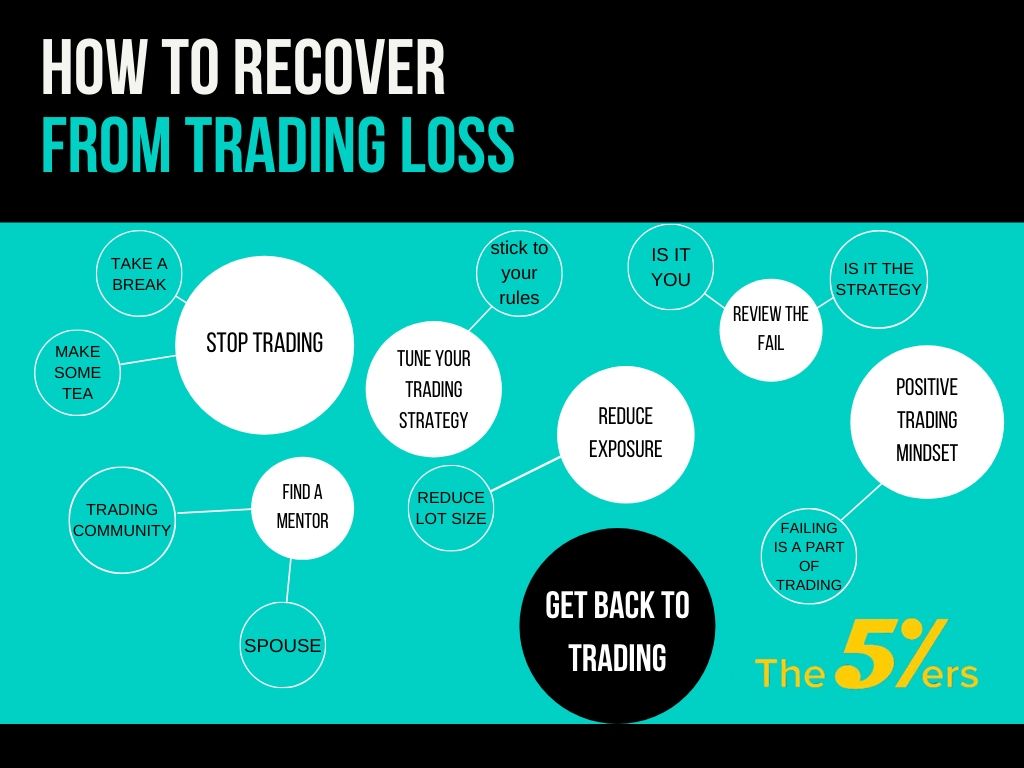For most traders, the toughest aspect of trading in Forex is dealing with financial losses. It’s not just a matter of pain and anguish, but it’s also a latent reality that losses are very often the trigger that drives traders to make their worst mistakes, which can cause even greater losses and start a vicious circle in which the trader’s account is out of control.
It follows that a trader has to have a defined strategy to cope with losses and have the ability to execute that survival strategy. There is no point in “knowing” that your losses are controlled and how to keep them under control if you are not able to apply what you know. Your loss strategy has to be real. You have to know the logic behind your knowledge of losses and believe in your truth with total faith.
The Losses Are Inevitable
Loss-making positions are inevitable; in fact, it is usually more difficult to make money with strategies that try to ensure a very high rate of profit. This is simply the natural form of market movements.
There are some traders who follow a methodology that tries to greatly reduce or even completely eliminate losses. There are only two methodologies that can achieve this and it is important to understand them perfectly:
1- Add to a position with losses by believing that he was right when he placed the original position and that he was only wrong when he opened it. You can even add a larger amount in the next position to make recovery easier. The reality is that, while this may work as a method, it is usually not optimal and we will usually have better results simply by accepting the first loss and closing the position instead of trying a “rescue”. After all, if your original stop loss was touched, why is the second operation going to be better than the first.
2- “Change with the wind” and open a position in the opposite direction. This is not really “avoiding” a loss, it is actually crystallizing a loss by changing the net position. If you go long with a 1 lot and then short with 2 lots, you will be going short with a 1 net lot with a crystallized loss in 1 long lot.
There is another thing you can do: do not close the position that is losing and let it run more and more against you. If he does, he’s liable to burn his account. Hopefully, maybe I’ve already convinced him that we should accept some losing operations. If I haven’t, please go back and read that over and over again until I’m convinced. If you are not convinced, you can write to me and explain your reasons: perhaps I could convince you by email!
Know What Losses You Can Tolerate
Once you have accepted that you will have operations with losses and go through streaks of losses (known as “drawdowns”), you have to decide how much you can psychologically tolerate losing without losing your nerves as well. For that, you have to have an honest conversation with yourself. You might think you can deal with something like a 50% drawdown on your trading account, but you might actually find yourself unable to cope with even a 25% loss when it takes place in reality. Try to visualize this happening, close your eyes, and get in position.
A second factor that has to be considered is that as you increase any drawdown on your account, it increases the amount you need to win back to reach the amount you started with. For example, if you lose 10%, then you must grow the remaining 90% by 11.11% just to return to the original 100% amount. When we have a very deep drawdown of 50%, you must earn 100% just to return to the original amount of 100%. It is a vital fact that the deepest their losses, the more difficult it will be to get back to square one. Having considered this, on the other hand, it is also true that the less you risk, the less you will win when trading progresses in a favorable way.

Maximum Losses
A good goal to consider is never to ever, in any case, lose more than 25% of the value of your trading account, because once you lose 25% you will have to make 33.33% profit just to get back to where you started, and when you lose more than 25% of the amount you would later have to earn to return or even to increase very quickly: once you have dropped 50%, you have to earn 100%, for example. In a crazed market, your stop loss might not work at all and you could be completely eliminated if you use too much leverage.
Use A Trading Method
Once you have established what the maximum loss you can tolerate is, you need to be sure of the method you are going to use to choose when to enter and exit operations and what financial asset you are going to trade, and this method should be a proven method that produces a positive “hope”. That is, by analyzing a lot of positions, he earns more money than he loses. You need to believe that it is a cost-effective method by itself, and also subject it to a review or backtest over several years of historical data.
This is very important because, when you have a streak of unavoidable losses, you have to have the courage to continue trading. If you do not do it and stop operating, or if you lose your nerves and operate in excess, you will miss the winning streak that will come after the losing streak.
Another great advantage of a backtest is that you can use a great one in a long-term review to determine what was the worst performance in terms of drawdown and the number of consecutive losing operations. You can use this to have the assurance that you will be perfectly able to survive the bad streaks. For example, if the worst outcome of your strategy in the last 10 years and thousands of operations is 50 consecutive losing operations, and you believe that the maximum drawdown you’re going to be able to tolerate is 25%, that suggests that, if you risk 0,50% of your trading capital per transaction, you are likely to experience such a drawdown in the next 10 years. If you reduce the risk to, for example, 0.25% per operation, this drawdown depth will be less likely.
You should also use a strategy to manage fractional risk, this gives you peace of mind with the knowledge that there is a cushion to minimize the total loss of evil seasons. You will also be able to decide that, if you ever experience a reduction worse than the worst case in the last 5 years, you will have to stop trading and revisit your strategy.
Catastrophic Losses
Sometimes events happen on the market that triggers such large, sharp movements at the price that even if you are working with a stop-loss your agent will not be able to run. This means that when the stop is well activated, you can encounter much greater losses than you had anticipated. When the bond of the Swiss franc was withdrawn in 2015 we had a good example of this. The vote in favor of Brexit was a much softer example.
You can avoid this problem by ceasing to operate any currency whose central banks have a policy of swimming against the tide of the market by tying its value to another currency, and not having open positions right before there’s a huge risk of an event being scheduled, such as a referendum.
Tranquility Will Help You Weather the Storm
Once you have taken the steps outlined above, you may have the confidence to risk money on operations within the parameters you have defined. You will know more or less what percentage of operations tend to lose, the duration of the streaks, and, most importantly, that over time tends to go ahead. At this stage, it must be accepted that loss-making operations are natural, and are the only necessary sacrifices that you must make in the market to earn money. In other words, the cost of doing business.





